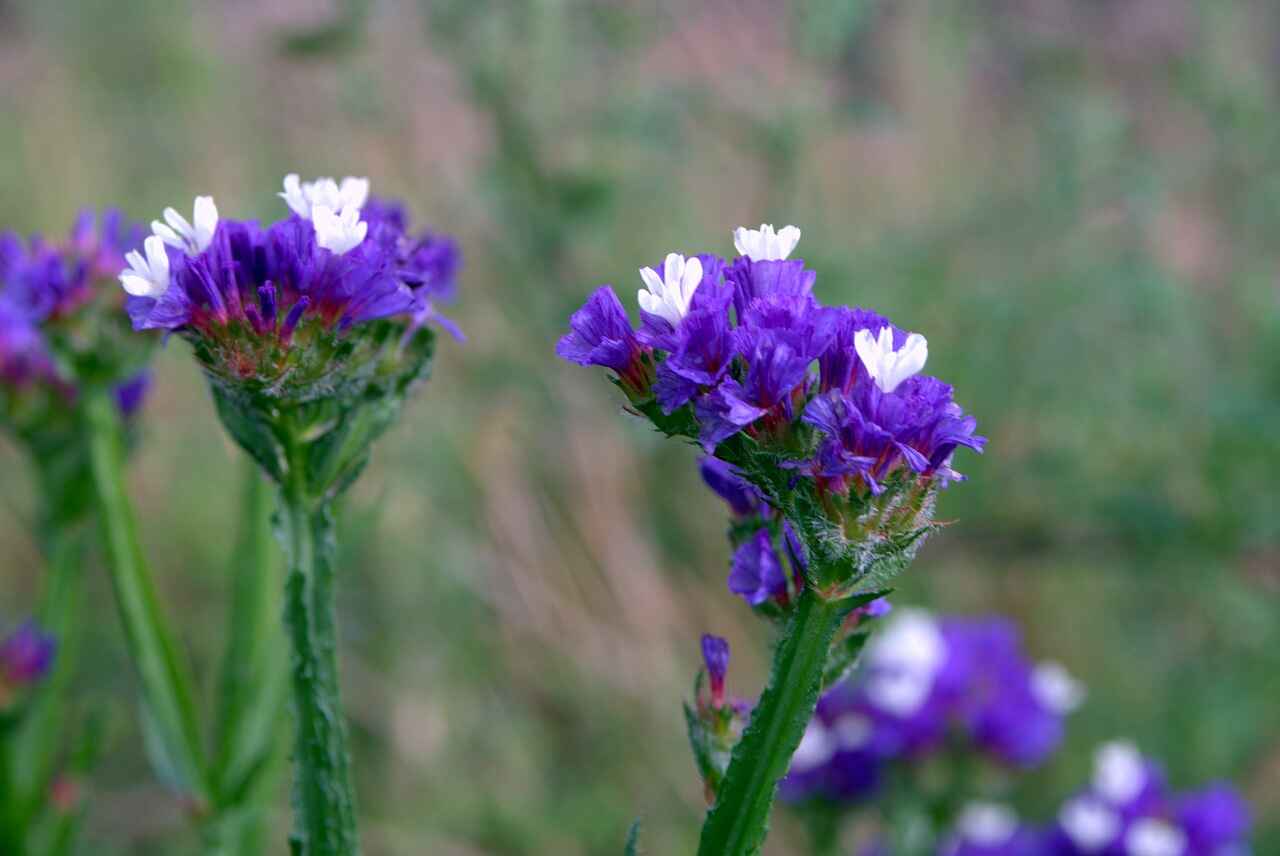Growing Limonium Flowers
Growing Limonium flowers is relatively easy. They are hardy plants that can thrive in various conditions. Here’s a step-by-step guide to help you grow these beautiful flowers in your garden.
Choosing the Right Location
Limonium flowers prefer full sun. Choose a spot in your garden that receives at least 6 hours of sunlight daily. These plants can tolerate some shade, but they bloom best in full sun.
Soil Requirements
Limonium prefers well-drained soil. Sandy or loamy soil is ideal. These plants are tolerant of poor soil conditions but do not thrive in heavy clay soils. Ensure good drainage to prevent root rot.
Planting Limonium
You can start Limonium from seeds or transplants. Here’s how:
- From Seeds: Sow the seeds indoors 8-10 weeks before the last frost. Plant the seeds in seed trays filled with seed-starting mix. Keep the soil moist but not waterlogged. Once the seedlings have two sets of true leaves, they can be transplanted outdoors.
- From Transplants: If you buy transplants, plant them outdoors after the last frost. Space the plants about 12-18 inches apart to allow for growth.
Watering
Limonium plants are drought-tolerant once established. Water the plants regularly during the first growing season to help them establish a strong root system. After that, they need minimal watering. Water them only during extended dry periods.
Fertilizing
Limonium flowers do not require heavy fertilization. A light application of a balanced fertilizer in the spring is sufficient. Too much fertilizer can lead to excessive foliage growth with fewer flowers.
Pruning
Deadheading, or removing spent flowers, can encourage more blooms. Cut the stems back to the base once the flowers start to fade. This practice also helps to keep the plant tidy.
Pests and Diseases
Limonium flowers are relatively pest-free. However, they can occasionally be affected by aphids or spider mites. Use insecticidal soap or neem oil to treat infestations. Ensure good air circulation to prevent fungal diseases like powdery mildew.
Uses of Limonium Flowers
Limonium flowers are highly versatile. They are used in various ways, from ornamental to practical applications.
Floral Arrangements
Limonium flowers are popular in floral arrangements. Their delicate, paper-like blooms add texture and color to bouquets. They are often used as filler flowers to complement larger blooms.
Dried Flowers
One of the unique features of Limonium flowers is their ability to retain color and shape when dried. They are commonly used in dried flower arrangements. To dry Limonium flowers, hang the stems upside down in a dark, well-ventilated area until they are completely dry.
Landscaping
Limonium flowers are excellent for landscaping. They can be used in rock gardens, coastal gardens, and borders. Their salt tolerance makes them ideal for coastal areas where other plants might struggle.
Medicinal Uses
Some species of Limonium have been used in traditional medicine. For example, Limonium vulgare has been used to treat ailments like diarrhea and sore throats. However, always consult a healthcare professional before using any plant for medicinal purposes.
Tips for Success
Here are some additional tips to ensure your Limonium flowers thrive:
- Mulching: Apply a layer of mulch around the plants to help retain moisture and suppress weeds.
- Companion Planting: Plant Limonium with other drought-tolerant plants like lavender, sage, or yarrow. This combination can create a low-maintenance and attractive garden bed.
- Winter Care: In colder climates, Limonium plants can be mulched heavily to protect them from freezing temperatures. Alternatively, you can grow them in containers and bring them indoors during winter.
Conclusion
Limonium flowers are a beautiful addition to any garden. With their delicate blooms, easy care, and versatility, they are a favorite among gardeners and florists alike. Whether you’re looking to enhance your garden with their colorful presence or use them in stunning floral arrangements, Limonium flowers are sure to impress. Follow the tips in this guide, and you’ll be rewarded with a garden full of vibrant, long-lasting blooms. Happy gardening!





